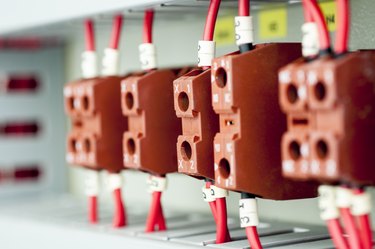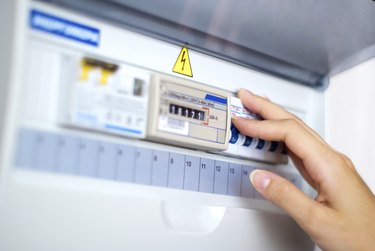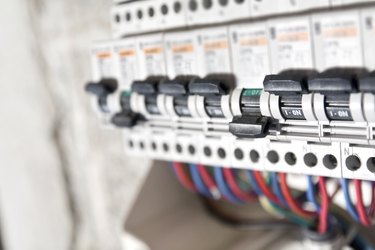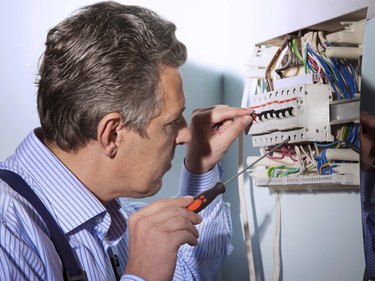Things You'll Need
Backfeed breaker
Mechanical interlock kit
Cable ampacity tables
Cable
Multimeter

The National Electrical Code requires transfer switches or backfeed breakers with a mechanical interlock for auxiliary generators that can connect to the main breaker panel of a residence. The transfer switch or interlocked backfeed breaker acts to prevent the connection of the generator while the main breaker for the panel is closed. The backfeed generator breaker can't be closed while there is main power on the panel and, when there is a power failure, it can only be closed after the main breaker is open. This interlock protects the generator from damage that could result from connecting to the unsynchronized mains supply, and it protects power line workers from dangerous voltages fed from the generator into the power lines during a power failure.
Step 1

Check the generator nameplate for the maximum continuous load current the generator can deliver. Select the breaker size that can carry the current, with common breaker sizes being 30 amps, 40 amps or 50 amps. Use the ampacity tables to select the cable corresponding to the breaker size, with a 30-amp breaker requiring a 10-3 cable, a 40-amp breaker an 8-3 cable and a 50-amp breaker a 6-3 cable. Check for free spaces in your breaker panel and compare them to the requirements of the interlock kit. Plan to move breakers if the kit requires free spaces close to the main panel breaker and these spaces are already occupied.
Video of the Day
Step 2

Open the main breaker. Move existing breakers to new locations if necessary, making sure that the cables connected to the breakers are long enough to reach. Mount the backfeed breaker according to the manufacturer's instructions. Connect the cable to the backfeed breaker and run it out to the generator. Close the main breaker and switch on the loads on any circuit breakers that have been moved, to test them. Close the backfeed circuit breaker and use the multimeter to check for voltage at the generator.
Step 3

Open the main breaker and the backfeed breaker. Bolt the mechanical interlock in place according to the manufacturer's instructions, and so the interlock engages the breaker closing mechanisms of the main and backfeed breakers. Make sure the mechanical interlock blocks the nose of the backfeed breaker when the interlock is in the "normal" position and blocks the nose of the main breaker when it is in the "backfeed" position. Test the operation of the interlock by closing the main breaker and trying to close the backfeed breaker at the same time. Open the main breaker, move the interlock into the backfeed position and close the backfeed breaker. Test the interlock by trying to close the main breaker. Connect and run the generator to test the entire installation.
Video of the Day